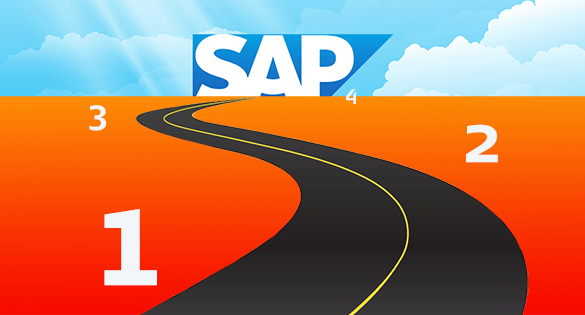4 Steps to SAP Licence Optimisation

SAP licensing is complex. Licence management, contractual obligations, complicated metrics, and industry-specific systems combine to make SAP licence optimisation a very necessary art. And as high-profile examples such as the SAP vs Diageo case show, misunderstandings can come with a damaging price tag. The key to avoiding this is awareness of your exact licence usage. Once you have the data, SAP licence optimisation is relatively easy to achieve.
Even if you believe you’re totally compliant, there’s a chance your organisation could save money by cutting under-used licences. In fact, the majority of SAP users are over-licensed, typically by 20 to 30 percent.
Over-Licensing and How to Avoid It
Over-licensing usually occurs when SAP licensing is based on predicted usage, rather than actual usage. To take one example, identifying 10 employees who are over-licensed by £2,000 would result in an immediate saving of £20,000. By replicating this process across dormant, low-activity, and duplicate users, the savings increase rapidly. Again, the key here is understanding and in-depth analysis.
With 25 years of BI licensing experience behind us, Influential Software’s consultants are experts in the field. And as an independent SAP Partner trusted by FTSE 100 and 250 clients, we have your best interests at heart. Don’t let SAP licensing weigh you down—consult the experts today.
The Hidden Danger of Non-Compliance
The SAP vs Diageo case showed just how slippery licensing agreements can be. At the crux of the issue were the definitions of “use”, “access”, “direct”, and “indirect”. The verdict ruled that Diageo’s indirect access to the SAP licences via a third-party system was included in the agreement’s definition. For this reason regular technical audits, conducted with a thorough understanding of SAP licence agreements, are crucial to ensuring compliance.
Quick Questions for SAP Licence Optimisation
- Do you frequently check the licence usage in your organisation?
- Are your organisation’s licensing agreements available to all who need them?
- Do you have clear responsibilities defined for SAP software asset management?
- Are you aware of how many surplus SAP licences you could redeploy?
If the answer to any of these questions is negative or unsure, then SAP licence optimisation should be a priority.
How to Excel at SAP Software Asset Management
The route to savings and compliance consists of four basic steps.
1. Evaluation
Our consultants will provide a report of your contractually available SAP licences and how that contrasts with SAP’s view on your environment. This will show up any licensing gaps that could indicate non-compliance.
2. Optimisation
An in-depth analysis of your usage will reveal your actual SAP software activity. This will highlight issues such as incorrect deployments, outdated software, accidental installations, and duplicate licences.
3. Renegotiation
At this point it’s important to turn any grey areas in your SAP agreement into black and white. Having negotiated with SAP on clients’ behalf for over 20 years, we hold our corner in this domain.
4. Ongoing awareness
By developing processes for ongoing monitoring of licence usage, you will ensure accurate licensing and compliance into the future.
Find out how much you could save on SAP licensing.